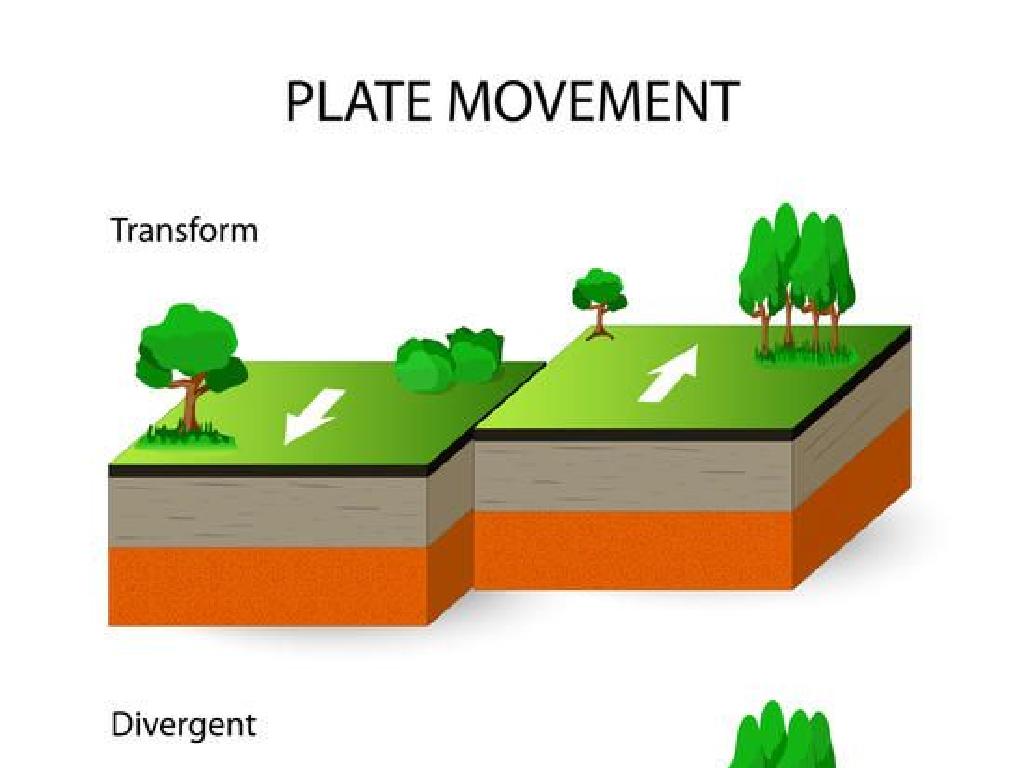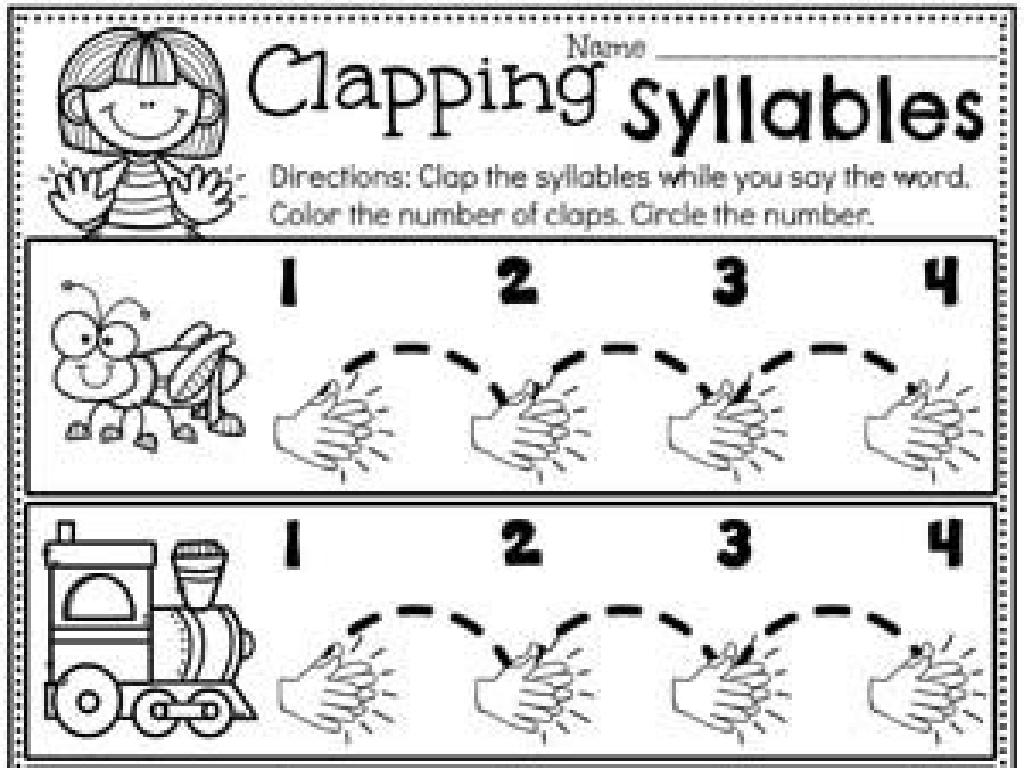Determine The Meaning Of Domain-Specific Words With Pictures
Subject: Language arts
Grade: Fifth grade
Topic: Context Clues
Please LOG IN to download the presentation. Access is available to registered users only.
View More Content
Today’s Adventure: Unraveling the Mystery of Words!
– Discovering Context Clues
– Context Clues: Definition
– Clues in text that help us guess word meanings
– Using Context Clues
– They let us become word detectives, finding hints
– Examples and Practice
– We’ll look at pictures that show word meanings
|
This slide introduces the concept of context clues to fifth-grade students, setting the stage for an interactive lesson on how to determine the meaning of unfamiliar words. Begin by explaining that context clues are like secret hints in a sentence that help us figure out what new words mean without looking them up. Emphasize that by paying attention to the words and sentences around the unknown word, we can often guess its meaning. Provide examples of different types of context clues such as synonyms, antonyms, explanations, and pictures that illustrate the word’s meaning. Encourage students to practice with provided examples and to use illustrations as visual context clues. This will help them become more independent readers and enhance their vocabulary.
Understanding Domain-Specific Words
– Define domain-specific words
– Words used in a specific subject area
– Importance of these words
– Example: ‘habitat’ in science
– ‘Habitat’ refers to the natural home of an animal or plant
– Example: ‘amendment’ in social studies
– ‘Amendment’ means a change added to a document or law
|
This slide introduces the concept of domain-specific words, which are terms that are particularly used within a specific field of study, such as ‘habitat’ in science or ‘amendment’ in social studies. Understanding these words is crucial for students as it helps them to grasp the content of a subject more deeply and engage in more meaningful discussions. Provide examples and ask students to think of other domain-specific words they know. Encourage them to use context clues from pictures and surrounding text to infer the meanings of these words. This will enhance their vocabulary and comprehension skills in various subjects.
Using Context Clues to Define Words
– Context clues in sentences
– Clues around a word that define it
– Types of context clues
– Definition, Synonym, Antonym, Example, Inference
– Practice finding clues
– We’ll work together to discover meanings
– Group activity
– Find and share clues with classmates
|
This slide introduces the concept of context clues, which are hints found within sentences that help readers define unfamiliar words. There are several types of context clues, including definitions provided in the text, synonyms and antonyms that offer hints about the word’s meaning, examples that illustrate the word in use, and inferences that can be made from the surrounding text. The slide sets up a group activity where students will practice finding and using these clues to determine the meaning of domain-specific words. Teachers should prepare sentences with challenging vocabulary and guide students through the process of uncovering meanings using different types of context clues. Encourage collaboration and discussion among students as they work together in groups.
Types of Context Clues: Unveiling Word Meanings
– Definition clues in sentences
– The sentence itself says what the word means.
– Synonym clues for understanding
– A word with the same meaning is used for clarity.
– Antonym clues reveal opposites
– Words with opposite meanings help by contrast.
– Example clues illustrate meanings
– Specific instances show how the word is used.
– Inference clues for smart guessing
– Use sentence hints to make an educated guess.
|
This slide introduces students to the different types of context clues that authors use to help readers understand the meaning of domain-specific words. Definitions are sometimes provided right in the sentence, making it easy to learn new words. Synonyms and antonyms serve as helpful hints by providing a word with a similar or opposite meaning. Examples can offer a clear illustration of how a word is used in context. Lastly, inference clues require students to read between the lines and deduce the meaning. Encourage students to look for these clues in sentences and use pictures to help them connect words with their meanings. Practice with sample sentences can reinforce this skill.
Exploring Domain-Specific Words
– Identify the domain of the word
– Domains like Science or Math have unique words
– Use sentence clues for meaning
– Clues are words or phrases that explain the meaning
– Practice with ‘photosynthesis’
– Find ‘photosynthesis’ in a sentence and guess its meaning
– Discuss findings in class
|
This slide aims to teach students how to determine the meaning of domain-specific words by using context clues. Start by explaining what a domain is and provide examples of different domains such as Science, Math, and Literature. Emphasize that each domain has its own set of specific vocabulary. Guide students on how to look for clues within a sentence to infer the meaning of a new or unfamiliar word. For practice, use the word ‘photosynthesis’ and help students find the meaning through context clues in a given sentence. Encourage students to share their findings and understanding of the word in the next class. This activity will enhance their vocabulary and comprehension skills, particularly in domain-specific contexts.
Group Activity: Word Detective
– Break into small groups
– Analyze sentences with unique words
– Look for words specific to a subject or field
– Use context clues for meanings
– Clues include the words around it, the sentence, or pictures
– Present findings to the class
|
This group activity is designed to enhance students’ vocabulary skills by working as detectives to uncover the meanings of domain-specific words. Divide the class into small groups to foster collaboration. Provide each group with sentences containing domain-specific words, which they may not be familiar with. Encourage them to use context clues such as surrounding words, sentences, or associated pictures to infer the meanings. After the activity, each group will present their words and inferred meanings, allowing for class discussion and reinforcement of the learning objectives. For the teacher: Prepare sentences with clear context clues, ensure each group has a different set to discuss, and be ready to guide them through the process if they struggle.
Class Activity: Crafting Clues for Domain-Specific Words
– Pick a domain-specific word
– Write a sentence with clues
– Include hints in your sentence to define the word
– Exchange papers with a classmate
– Try to figure out each other’s chosen words
– Guess the word and share with class
– Discuss how context clues helped in guessing
|
This activity is designed to help students understand the use of context clues in determining the meaning of domain-specific words. Students will select a word related to a specific subject, such as ‘photosynthesis’ for science, and write a sentence that provides hints about the word’s meaning. After writing, they will swap their sentences with a partner and attempt to guess the word based on the provided context clues. Once everyone has guessed, students will share their sentences and the guessed words with the class, discussing how the context clues helped them. For the teacher: Prepare a list of domain-specific words for students who may struggle to choose one. Encourage creativity in sentence writing and ensure that students understand the importance of context clues in comprehension.
Review and Reflect: Context Clues & Domain-Specific Words
– Understanding context clues
– Clues in text that help us define words
– Identifying domain-specific words
– Words specific to a subject or field
– Reflect on today’s learning
– Share your insights
– Think about one new thing you’ve learned
|
This slide aims to consolidate the day’s learning by reviewing the concept of context clues and their significance in understanding domain-specific vocabulary. Context clues are hints found within a text that can help decipher the meanings of unfamiliar words. Domain-specific words are terms that are particularly used within a specific field of study or interest. Encourage students to reflect on how identifying these words can enhance comprehension of a subject. Ask them to share one thing they’ve learned about using context clues or domain-specific words, fostering a collaborative learning environment where insights are valued and shared.
Homework Challenge: Domain-Specific Words
– Find a domain-specific article
– Choose an article about a topic you like, such as science or sports
– Highlight 5 domain-specific words
– Look for words unique to the article’s subject
– Use context clues to define words
– Read around the words to guess meanings
– Share your findings in next class
|
This homework task is designed to help students understand the concept of domain-specific vocabulary words that are specific to a particular field of study or interest, like ‘photosynthesis’ in science or ‘home run’ in baseball. Students should select an article that interests them and identify five words that are specific to that domain. They should use context clues words or phrases around the unknown word to infer the meaning. Encourage students to write down the sentence or paragraph where they found the word, along with their inferred definition. In the next class, students will have the opportunity to present their words and definitions, fostering a collaborative learning environment where they can teach and learn from each other.





